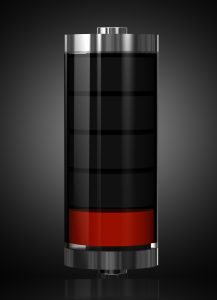Time To Read: 11 minutes
by Christo Fourie
Bluetooth hearing aids gives you the ability to stream your phone, mp3 player, TV and more but there are some things you ought to know.
Bluetooth hearing aids certainly add an extra dimension to your hearing aid experience. They can add a lot of fun features such as the ability to stream your favourite music or podcast directly through your hearing aid. They even allow you to take calls on your mobile phone.
With this added functionality comes added frustration if you are not prepared for what to expect.
All these developments are exciting and makes some hearing aids more a ‘want to have’ than a ‘need to have’, once you realise how it can improve your life, not just through better hearing, but also by making some aspects downright enjoyable.
Over the last year I have tried several models of Bluetooth hearing aids in my day-to-day life.
My focus was on the phone call and streaming capabilities, more than the hearing enhancement component of these little marvels. As such my experience speaks to a wide range of devices, even at the lowest level of technology.
As a clinician I have also experienced first hand the frustration these new enhancements can bring if expectations are not set thoroughly. Bluetooth technology is second nature to me, but for some it is confusing and overwhelming. I will try to speak to you no matter what your level of technical prowess.
Here goes nothing…
Bluetooth Hearing Aids are Hearing Aids first
 Bluetooth is great, but occasionally the signal can drop out. Your hearing aids will continue to work as hearing aids if that happens.
Bluetooth is great, but occasionally the signal can drop out. Your hearing aids will continue to work as hearing aids if that happens.Unlike some hearables coming onto the market, hearing aids are designed to improve your hearing first and foremost. Bluetooth sometimes seems like an afterthought in some of these devices.
What this means is that even if the Bluetooth connection drops out, which happens frequently in some models, the hearing part of the device will continue to work as designed.
Just because the Bluetooth does not appear as stable as you’d hope, that does not mean it is a terrible hearing aid. It just means that Bluetooth is quite finicky at the best of times and some corners needed to be cut to make it work in a hearing aid.
Bluetooth is quite power hungry and it is an amazing feat to actually have this in a hearing aid in the first place. Hearing aids also need to be small, so the antennae for the Bluetooth radio is smaller than in large Bluetooth earphones. In order to operate within the confines of a small hearing aid, some compromises needed to be made. You can read more about it in our article on Bluetooth in hearing aids here.
These compromises means that Bluetooth in a hearing aid is not designed to replace high quality headphones, although a device like Phonak’s Marvel range of hearing aids gets very close. It is designed to add functionality over and above amplification of hearing loss.
What you should expect from the Bluetooth part of your hearing aid
The Good
- A Bluetooth hearing aid can make it possible to conveniently listen to your favourite music in private, while going along with your day to day business. No one needs to know that you are silently rocking out to your favourite tunes or absorbing your favourite podcast. This is especially helpful if you suffer tinnitus, as silence and tinnitus do not mix well.
- Bluetooth hearing aids can allow you to take mobile phone calls through your hearing aids. This can be a tremendous help if hearing people on the phone, where lip reading is out of the question, is even a slight problem for you. Some models even allow Hands Free calling!
- Bluetooth hearing aids also allow you to connect to hearing aid apps. Some of these apps are quite advanced and allow remote control of the hearing aids. Others even allow Artificial Intelligence features to help improve your hearing.
- Some Bluetooth hearing aids even allow remote fine tuning, reducing the need for in clinic visits just to have a quick tweak applied.
- Most Bluetooth hearing aids have an optional accessory, allowing you to stream the TV signal in beautiful stereo directly into your hearing aids. They still keep the hearing aid microphones active, so you can hear those people close to you, but you have your own control over the TV volume at a level of clarity that has to be experienced.
The Bad
- Bluetooth hearing aids can disconnect from your phone intermittently while you’re streaming. You might be happily enjoying a nice song while out walking the dog and suddenly one ear drops out or you gets pops and crackles happening. This is because Bluetooth is inherently sensitive to interference and the wavelength used for the radio signal cannot pass through your body. So it is often the ear furthest away from your phone that loses connection. This can be worse when approaching intersections where there are a lot of cars and traffic lights, all contaminating the radio signal. The small hearing aid battery and Bluetooth Antenna certainly does not help. Certain models, like Resound’s Quattro and Phonak Marvel have techniques to greatly reduce the frequency of interference. But even they aren’t perfect.
- The sound quality, especially on ‘made for iPhone’ hearing aids can leave a lot to be desired. This is because the amount of data transmitted via Bluetooth is reduced to improve battery life. The Quattro and Marvel does much better in this regard, but if your ear is unplugged due to the requirements of your hearing loss, you won’t hear the lovely bass that a good set of earphones can produce.
- A simple phone update can break the Bluetooth connection to your hearing aids. You’ll have to then wait for the phone manufacturer or the hearing aid manufacturer to release a fix, before things work again. It does not happen frequently, but when it does it is very annoying.
- Hearing aid manufacturers still have quite a bit to learn about smartphone apps. Their apps work most of the time, but sometimes there are annoying bugs or obvious oversights or missing features. They do update these apps regularly, but it is best not to purchase a hearing aid just because of a specific phone app.
- Using a lot of streaming can drain your hearing aid battery faster. So don’t expect a Bluetooth hearing aid battery to last as long as a non-Bluetooth hearing aid battery.
The Ugly
Sometimes things just stop working altogether. They phone won’t connect to the aid and the Bluetooth connection just won’t respond. This is especially frustrating for the technically reserved individual.
Fortunately there are some simple steps to get things up and running again.
- Restart the hearing aids, by turning them off and back on and try again.
- Make sure you are using a new battery (if applicable) or that the aid is charged
- Unpair the hearing aids from your phone - for ‘made for iPhone’ devices you’ll find this under accessibility/MFI Hearing aids. On the true Bluetooth hearing aids like the Phonak Marvel, you’ll need to go to settings/Bluetooth and pair from there.
- Try repairing the aids - if this fails reset your phone, by powering it down and back up and try again.
In most cases this should do the trick.
Phonak has a support site for the Marvel, where you can search for your issue and find direct answers. https://marvel-support.phonak.com/en/
Oticon also has a support section here: https://www.oticon.com/support/how-to/opn-wireless-connections/faq
Resound: https://www.resound.com/en-au/help/connected
Final verdict
Bluetooth is one of my favourite hearing aid features despite the “issues” mentioned above.
It truly turns the hearing aid from an aide to a enjoyable device. Once you realise that Bluetooth has a few issues and you can comfortably accept and work around them, it becomes an enjoyable experience.
Make sure your hearing care professional is confident in supporting Bluetooth hearing aids if you choose one. You’ll be relying on their expertise to get you through the frustrating times.
More reading:
- The truth about Bluetooth and radiation
- Can my Bluetooth hearing aids get hacked?
- Reduce clinic visits without sacrificing outcomes
Further reading
- How To Troubleshoot Hearing Aids
- How To Clean Your Hearing Aids
- The Truth about Bluetooth (and radiation)
- Can my Bluetooth Hearing Aids get hacked?
- How we ensure your experience is consistent
- What you need to know about Hearing Aid Insurance
- Reduce clinic visits without sacrificing outcomes
- Do I really need such an expensive hearing aid?
- Introducing Bluetooth Hearing Aids



